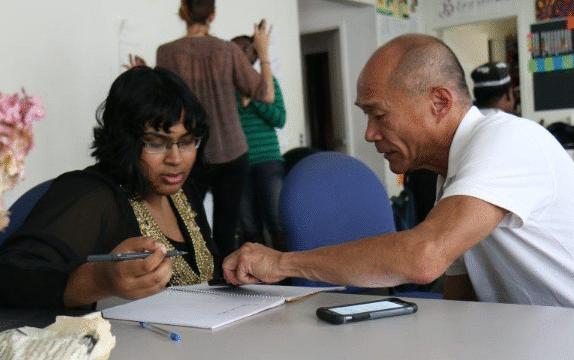Education has always been one of the most powerful
tools for personal growth and social progress. Around
the world, communities recognize that when every
child and adult has access to quality learning opportunities, the benefits go far beyond classrooms. Education opens doors to employment, encourages innovation, and lays the foundation for stronger economies. It is directly linked to economic mobility, which refers to the ability of individuals and families to improve their financial and social circumstances across generations. When education is accessible to all, it creates pathways out of poverty, strengthens communities, and nurtures more inclusive economies.
Economic mobility depends heavily on skills and opportunities. Individuals who are equipped with knowledge, literacy, and specialized skills are better able to pursue higher-paying jobs, adapt to changing markets, and even start their own businesses. For those who come from low-income backgrounds, education provides the bridge to a brighter future. It is not simply about memorizing facts or passing exams; it is about gaining the confidence and abilities to build stable livelihoods. In this way, education is both a personal right and a collective investment.
The link between education and income levels is well established. Studies consistently show that people with higher levels of education earn more over their lifetimes. A student who completes secondary school or earns a university degree generally has more career options compared to someone without those opportunities. But the impact goes beyond wages. Educated individuals are more likely to have access to healthcare, live in safe neighborhoods, and provide stability for their families. These factors contribute to social mobility, allowing future generations to start life from a stronger foundation.
Making education accessible to all is not just a matter of fairness; it is a strategy for economic development. Countries that invest in universal education tend to experience faster economic growth. When more citizens are skilled and knowledgeable, productivity increases, industries expand, and innovation thrives. For example, nations that have prioritized universal schooling have seen significant advancements in technology, agriculture, and healthcare. Education equips people not only to fill jobs but also to create them, leading to more resilient economies.
However, access to education is not equal everywhere. Many children still face barriers such as poverty, distance from schools, or the need to work to support their families. In some regions, girls encounter cultural or social obstacles that prevent them from attending classes. Adults who missed out on schooling in their youth may find it difficult to return and learn new skills later in life. These barriers limit opportunities for entire communities, slowing down progress toward economic mobility. Addressing these challenges requires policies, programs, and partnerships that ensure no one is left behind.
One powerful approach is investment in early childhood education. Research shows that the first years of life are critical for brain development, and children who attend preschool are more likely to succeed later in school. For families in low-income communities, affordable early education provides a stepping stone toward lifelong learning. Similarly, vocational training and technical programs offer practical skills that prepare students directly for employment. These programs are especially valuable in regions where traditional academic pathways may not be accessible or sufficient to meet local labor market needs.
Technology also plays a transformative role in expanding education for all. Online platforms, digital classrooms, and mobile learning applications allow students in remote areas to connect with teachers and resources they might not otherwise have. This reduces geographic barriers and helps adults continue learning even while balancing work and family responsibilities. While digital learning is not a complete solution, it represents a powerful complement to traditional schooling, opening new doors for millions of learners worldwide.
Another important factor in linking education to economic mobility is equity. It is not enough to expand education broadly; the quality of learning must be strong and inclusive. Schools should provide supportive environments where all students, regardless of background, feel encouraged to participate. Teachers need training, resources, and fair pay to deliver meaningful instruction. Curricula should reflect both academic knowledge and real-world skills, preparing students not only for exams but for active participation in society and the economy. When education systems are designed to be equitable, the benefits of mobility reach further and last longer.
Communities themselves play a central role in ensuring education supports mobility. Local organizations, families, and leaders can encourage children to stay in school, provide mentoring, and create safe learning environments. Employers can contribute by offering apprenticeships, internships, and partnerships with schools to ensure students gain practical experience. Governments, in turn, can design policies that make education affordable, whether through scholarships, subsidies, or free public schooling. Each effort reinforces the idea that learning is not a privilege for some but a shared responsibility that benefits everyone.
The ripple effects of education on economic mobility are profound. A child who completes school is more likely to secure steady employment. With stable income, that person can provide better nutrition and healthcare for their family, which in turn allows the next generation to start life in stronger health. This cycle gradually breaks down patterns of poverty and inequality. Communities with high education rates also tend to have lower crime rates, higher civic participation, and stronger economies. Education does not guarantee success in every case, but it provides the foundation on which people can build secure and fulfilling lives.
It is worth remembering that economic mobility is not solely an individual journey. It is shaped by systems, institutions, and opportunities. That is why ensuring education for all is a collective responsibility. By removing barriers and promoting inclusive learning, societies unlock the potential of every individual. This not only improves personal lives but also builds stronger economies that are more adaptable to global changes. In today’s rapidly shifting world, where technology and markets evolve quickly, the ability to learn continuously is more important than ever.
Looking to the future, the vision of education for all is about more than universal access. It is about creating systems where every learner feels empowered to grow, adapt, and contribute. It is about linking classrooms to careers, textbooks to technology, and local needs to global opportunities. Most importantly, it is about ensuring that no matter where someone is born or what challenges they face, they have the chance to climb the ladder of economic mobility through education. When education truly reaches everyone, the path toward more equitable and prosperous societies becomes possible.
In conclusion, education for all is not just a moral commitment but also a practical necessity for economic mobility. It equips individuals with the tools to improve their lives, strengthens communities, and drives national growth. By investing in inclusive, high-quality education systems, societies create opportunities that extend across generations. The link between learning and mobility is undeniable, and by nurturing it, we help ensure a future where progress is shared more fairly and widely.






